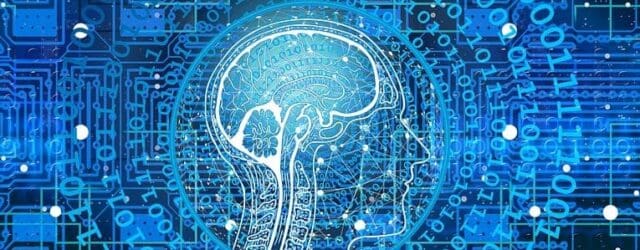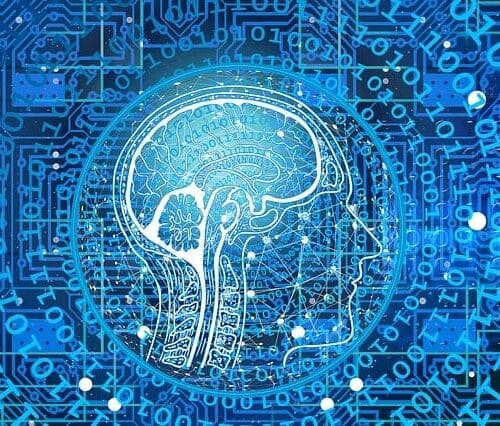The impact of artificial intelligence on the construction industry
August 2024What is Artificial Intelligence?
Artificial Intelligence (“AI”) is a field of science concerned with building computers and machines that can reason, learn and act in such a way that would normally require human intelligence. It also encompasses data of a scale that far exceeds what humans can analyse.
The impact of AI on the way we work and learn is considerable and has not gone unnoticed by those in the industry. This can be seen through the increase of articles, practical guidance, reports and importantly, the introduction of new legislation and regulation to legislate the use of AI. By way of example, the Chartered Institute of Building has published the Artificial Intelligence Playbook (which can be found here) which provides insights into the use of AI and its practical application in the workplace. RIBA has also published an AI report (which can be found here) which details their findings on the use of AI and what it means for society and the architectural profession in particular.
Regulating AI
Beale & Co have previously written about the EU AI Act, which you can read here. More widely, the Artificial Intelligence (Regulation) Bill was proposed and sought to introduce various functions designed to help address AI regulation in the UK and put regulatory principles into law for the first time. This Bill did not receive Royal Assent as part of the 2023-24 Parliamentary session before it was prorogued and so will not progress further unless reintroduced. We may also see additional information from the UK Government around digital and AI aspects. The Background Briefing to the 2024 King’s Speech referenced the Government’s plans to “…harness the power of [AI] as we look to strengthen safety frameworks”[1]. Further, there was mention of establishing appropriate legislative requirements on those developing powerful AI models from an employment rights perspective[2].
Use of AI in the construction industry
AI has existed within the construction industry for many years, for example with the use of CAD and BIM. However, its use has increased and expanded dramatically in recent times, particularly with the introduction of Generative AI (for example, ChatGPT which was introduced in November 2022) and innovative products such as Dall-E, XKool, Midjourney, Staple Diffusion, PromeAI, Sketch up Diffusion and LookX.
In March 2024, following a speech on the Government’s commitment to use AI to revolutionise public services, boost productivity and save taxpayers money, the Infrastructure and Projects Authority (“IPA”) launched a new framework to encourage the use of AI on projects. This framework contains helpful guidance on how to utilise AI to solve challenges, increase efficiency in public project delivery and upskill professionals. The IPA plans to develop this work through a number of innovative pilots which, if successful, will be rolled out more widely. Although this is focused on public project delivery, it will hopefully set a useful precedent around the use and potential of AI in the industry.
Many organisations in the industry are increasingly supporting the use of AI and recognising the potential benefits that it brings, particularly in improving design and construction processes which have historically been very traditional and lacking in innovation. It seems from the RIBA report that architects, interior designers, and landscape designers in particular are beginning to embrace AI. The RIBA report suggests that at least 41% of architecture practices are currently using AI (albeit only 2% of practices are currently using it on every project). It is inevitable that others in the industry will follow suit (and many are already doing so).
Clients are also posing more questions during the tender process on how practices are using AI and we envisage the subject appearing in contracts in the not-too-distant future. Those using AI must therefore consider the extent to which they want to include any contractual provisions to reflect the risks of doing so, and whether they wish to include any carveouts from their liability for reliance on AI.
Opportunities AI brings
The use of AI in the construction industry comes with many opportunities, for example improved safety, enhanced productivity, quality control and design optimisation. In fact, many see AI as having the potential to revolutionise construction projects and the industry more generally.
Practically speaking, it appears that AI is now being used to facilitate the creation of multiple design options (for example, it can help to show the implications of moving structures and walls), generate images and masterplan layouts, and prepare models and specifications. Using AI in this way can help to give clients more options, whilst also allowing designers more time to focus on refining the detailed design.
It is important to note that, for the time being at least, AI is mostly being used at the very initial stages and for high-level exercises, rather than assisting with detailed tasks. This is supported by the RIBA report which suggests that the most common use is for early stage visualisations (with 22% of practices using it often and 60% using it sometimes). However, it is hoped that the use of AI will allow those in the industry to be more creative and efficient, particularly by allowing for faster iterations and changes.
AI can also be used in risk management, project monitoring, project management, safety tracking, productivity tracking and analysis of site documentation. The RIBA report suggests that uptake in these areas has been slower than its use in the actual design process. As the report suggests, this could be an area of focus for improving efficiency in the field, enabling AI to take over more administrative or repetitive tasks and allowing designers and contractors to focus on the more abstract concepts and ideas relating to particular projects.
What are the pitfalls?
Despite the clear potential opportunities, it is important to be mindful of the potential dangers or risks associated with the use of AI. This should not act as a deterrent to using AI but rather a reminder to ensure that you carefully manage its use in your workplace and on your projects.
Over-reliability of AI products
There is a real danger of over-reliance on AI without properly assessing the quality and reliability of the results that it produces. It is important to use the AI creations with caution and not to place full reliance on its outputs. It is widely suggested that AI should be used as a tool to assist those in the construction industry (for example to speed up their work), rather than replace them.
AI technology is trained on data which is input into the model (whether that model is a public or private model). This means that if poor quality, inaccurate or incomplete information is used to train the model then the output will likely be the same. There have also been instances where AI has created completely fictitious information so users must take care to scrutinize and verify the output. This is particularly important when using public models which have been trained based on data collected from various sources. To avoid relying on poor quality or inaccurate data, practices could eventually create their own internal programmes of languages, objects, etc. which the model will then feed on for future projects.
It will not be enough for practices to simply rely on what is created by AI technology – this would be a breach of the obligation to perform their services with reasonable skill and care. It will be up to the practice to interpret the technology and build on its foundational ideas and drawings.
Confidentiality and data protection
As well as the pitfalls that come with models being trained on poor quality and inaccurate data, there are potential implications for confidentiality and data protection.
Most contracts contain confidentiality provisions which place restrictions on the use of project data. If models have been trained based on project data, then this could lead to a breach of the confidentiality or information security provisions. This is particularly the case for public models as the information would essentially be disseminated to the public without restriction. Although some contracts will allow sharing of confidential information or project data in specified circumstances, there will be limits under most contracts.
The same applies with data protection. The UK laws on data protection contain strict obligations on the handling of personal data. Users will need to carefully consider if the data being used contains any personal data and if so, whether it is compliant with UK GDPR (for example, if it is being lawfully processed). There may also be clear contractual requirements over the storage and transfer of personal or company data. It is worth noting that inputting personal data into public models (such as ChatGPT) is most likely going to be in breach of GDPR. The financial penalties and reputational impact of failing to comply with data protection laws should not be underestimated.
Copyright
There is also a risk of copyright issues, both in respect of the information that is being used to train the models and the ownership of the results that are created by AI.
In terms of the information that is being used to train the models, it could contain copyright that the inputter doesn’t own or is not permitted to share. This could lead to users breaching copyright by relying on the AI model. In addition, there are likely to be blurred lines as to where the intellectual property rights vest, and who will own any new content created if the data has come from multiple sources. That being said, recent US case law suggests that copyright cannot be attached to works generated entirely by an AI model due to lack of human authorship (Thaler v Perlmutter, et al 2023). It will be interesting to see how the English courts approach this issue as the use of AI becomes more commonplace.
Anyone relying on AI will likely need to grapple with all of the issues raised above, given that this is such a new and unexplored area. As a result, we do expect to see an increase in the number of potential disputes.
What is the future of AI?
Although there may be concerns that AI will take over the need for those in the construction industry because it can help efficiency and boost creativity at the outset and throughout the lifecycle of a project, designers and contractors will still be needed for the more detailed and complex elements. It is more about harnessing and working with AI to improve what contractors and designers can do and how quickly they can do it, rather than replacing these roles altogether.
AI will hopefully allow those in the construction industry to focus on the big decisions and challenges of today (for example how to remove operational carbon), rather than the small and administrative ones which AI can deal with.
For AI to continue to take off (and bring the additional benefits which we have highlighted above), there must be continued investment. Companies will also need to experiment with and train the AI tools, in addition to educating their staff on the utilisation of AI.
Those employing AI in the construction industry will need to keep in mind the associated legal issues and take responsibility if things go wrong. This will require internal governance as to the limits of AI and training in its application and complexities.
Please do get in touch if you would like advice on how to amend your standard terms or company policies in order to reflect the increasing use of AI
[1] Background Briefing to the King’s Speech 2024, Prime Minister’s Office, 17.07.2024, page 4 – https://assets.publishing.service.gov.uk/media/6697f5c10808eaf43b50d18e/The_King_s_Speech_2024_background_briefing_notes.pdf
[2] Background Briefing to the King’s Speech 2024, page 7.
Download PDF









